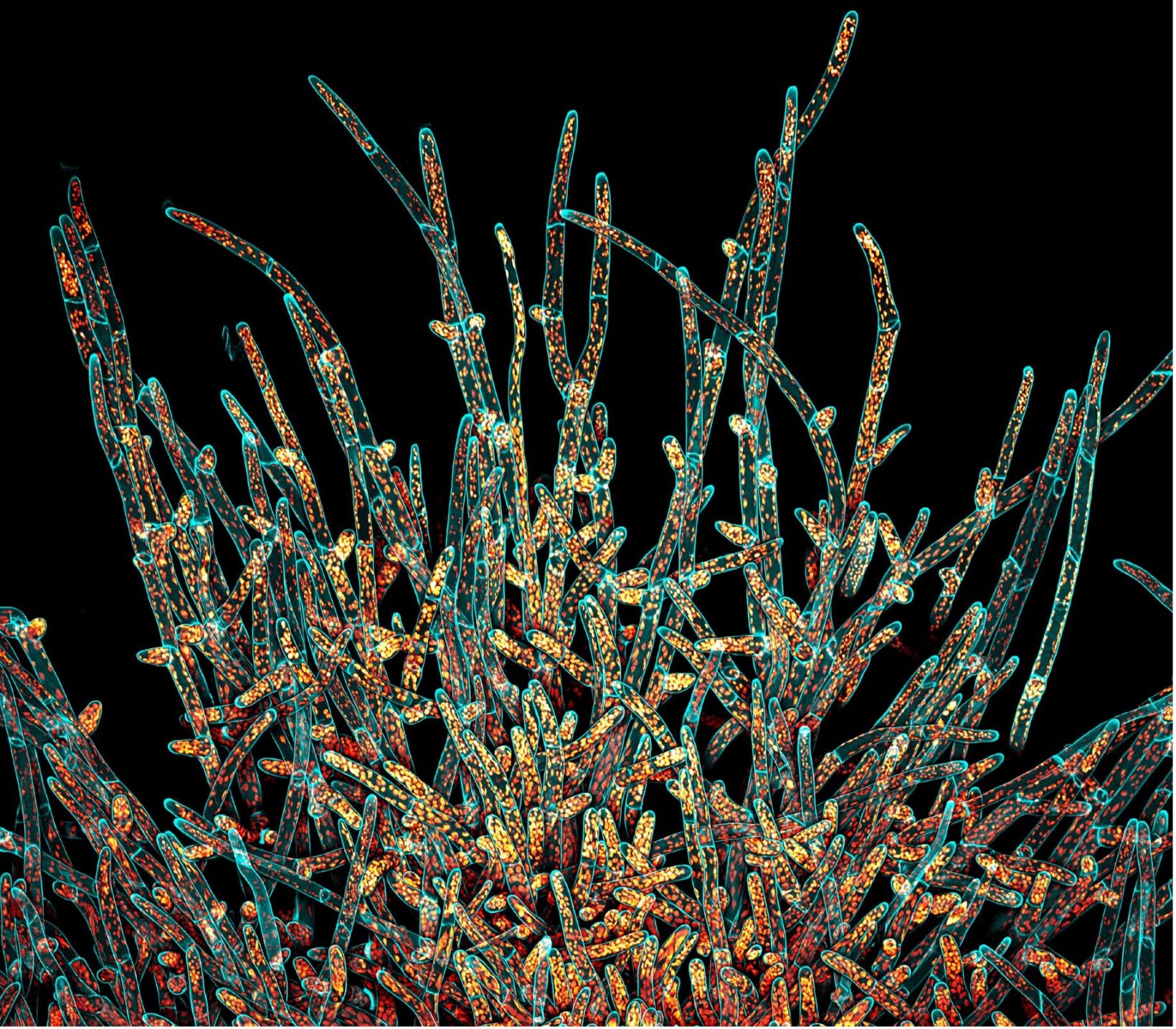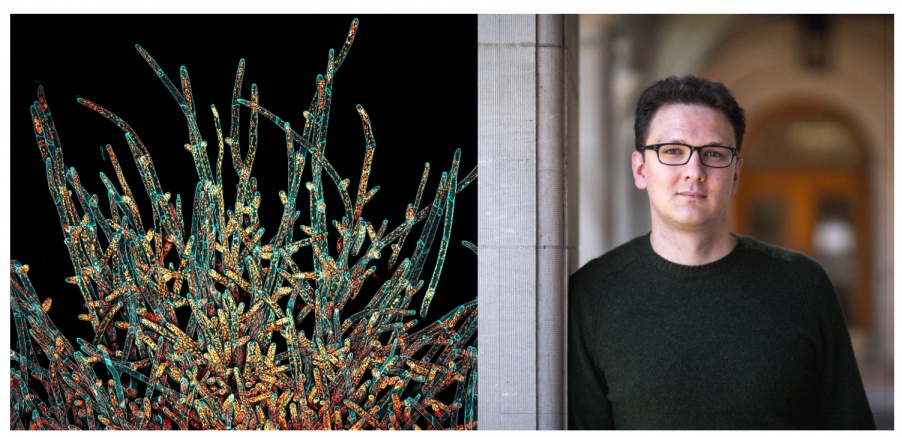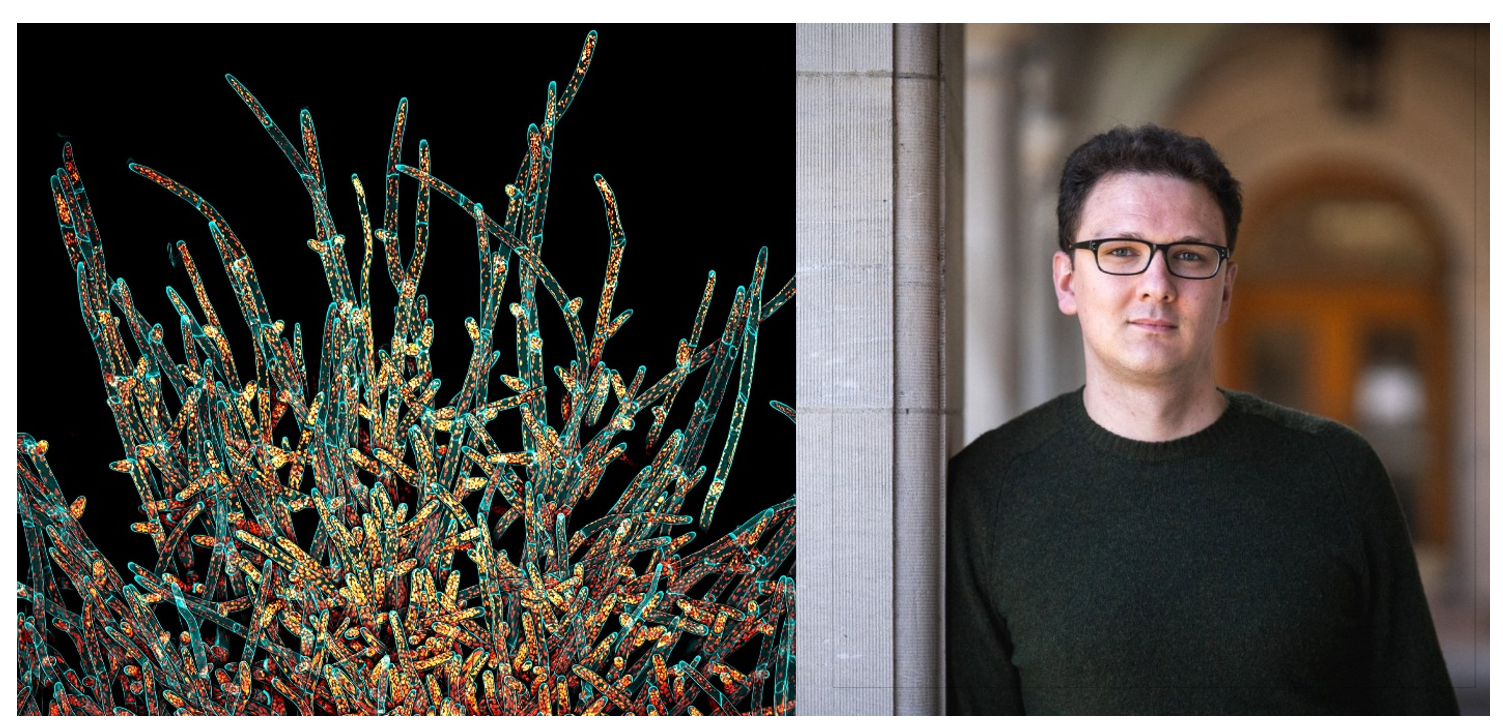This spring we announced the winners of our Global Image of the Year (IOTY) 2021 Award, and we’re happy to begin sharing the stories behind these stunning microscope images. For the first story, we want to highlight the work of Ivan Radin from the USA. His image of moss Physcomitrium patens protonemal cells impressed the jury and won the regional prize for the Americas.
Ivan is a postdoctoral fellow in the Haswell Lab in the Department of Biology at Washington University in St. Louis, Missouri. He has a scientific background in molecular and cell biology. For Ivan, art and science intersect in his work. His winning image was taken as part of a plant research project published in Science, demonstrating the artistic and scientific value of the capture. As he continues to image his work, capturing the beauty found under the microscope has become a growing art.
We spoke with Ivan to learn more about the winning image and his approach to the art of science.
Q: What does your winning image show?
Ivan: The image shows the edge of the young moss (Physcomitrium patens) plant that was stained with calcofluor white. This stain fluorescently labels the plant cell wall, and that fluorescence is shown in cyan on the image. The autofluorescence of the chlorophyll is shown in shades of orange.
The cells on the bottom, or closer to the center of the plant, are called chloronemal cells. They are smaller and have large chloroplasts that fill most of their interior. These cells are the main site of photosynthesis. The bigger cells that are spreading away from the plant are called caulonemal cells, and they have smaller and fewer chloroplasts. These cells grow fast and explore new areas to expand the plant.

Americas regional winner Ivan Radin imaged moss Physcomitrium patens protonemal cells.
Q: What do you find exciting about the subject of the image?
Ivan: For me, it’s fascinating how without the context, the moss under the microscope almost looks like an alien. The image challenges our preconceptions of what the plant should look like.
Q: How did you create this image?
Ivan: I used the Olympus FV3000 confocal microscope with a UPlanSApo objective (10X, 0.4 NA), galvo scan unit, and high sensitivity-spectral detectors. I captured the Z-stack of the cells on the plant edge with the largest image size the microscope allows (4096 × 4096 pixels). The image was then subjected to deconvolution. The final image is Z-maximum projections.
Q: Why did you choose this image as your entry for the IOTY competition?
Ivan: I am very excited about working with moss. It’s such an amazing model system, so I wanted to showcase its beauty. To find the best one, I made a set of 13 of my favorite images with different color combinations and then set up a poll and asked my family, friends, and colleagues to vote for the best one. And this picture was the clear winner, which I was happy about as it was my top favorite as well.
Q: What message about the image would like to share?
Ivan: Plants are awesome and cool and super interesting to study.
Q: Where and when did you first learn to use a microscope?
Ivan: I got my first introduction to microcopy during my PhD in Dresden, Germany, when I attended a microscopy introductory course. It was an amazing course that explained the basis and principles of microscopy. After that, I improved my skill by attending workshops. However, I mostly improved by just imaging often and trying new things.
Q: When did you become inspired to use microscopes to create art?
Ivan: During my regular work, I do a lot of imaging and make hundreds of pictures trying to see some structure or quantify something to answer a scientific question. However, every so often, a particularly beautiful scene or view comes across my eyepieces or screen, so I stop the experiment and take a few minutes to optimize the imaging conditions so I can take a nice picture of that scene. I don’t really seek to make a beautiful picture, but when the inspiration strikes me I follow it.
Q: What do you find most fascinating about microscopy?
Ivan: It’s a window into another world. We get to see beautiful and fascinating things that normally we would never see. Microscopy fascinated me from the moment I was introduced to it.
Q: What you are currently working on professionally and artistically?
Ivan: I am still working as a postdoc in the Haswell Lab. I currently have several projects where imaging is essential. So whenever I sit to work on the microscope, I keep my eyes open for the next beautiful thing.
Q: What do you like about using Olympus microscopes?
Ivan: I have been using the Olympus confocal microscope for several years now. In general, I am very happy with its performance and reliability. The customer support is also great, which is extremely valuable with such a complex piece of equipment.
IOTY 2022 Contest Announcement—Now Accepting Entries!
Our IOTY 2022 competition just launched, so now’s your chance to create and share your own microscope images. Head to our IOTY page to submit your entry and check out past winners. Plus, stay tuned for more posts highlighting the winners of our IOTY 2021 contest.
Related Content
Scientific Works of Art: Announcing the Winners of Our 2020 Global IOTY Award
Lifelong Love of the Microscopic—Meet the IOTY 2020 Americas Regional Winner
Aesthetics of Autofluorescence—Meet the IOTY 2020 Global Winner


